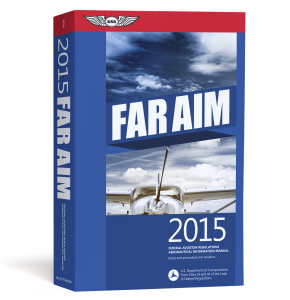Moving? Change of address? Did you know that that there is a regulation, 14 CFR §61.60 to be exact, that states the holder of a pilot, flight instructor, or ground instructor certificate who has made a change in permanent mailing address may not, after 30 days from that date, exercise the privileges of the certificate unless the holder has notified in writing the FAA, Airman Certification Branch?
That’s right, if you have a change of address you are required to notify the FAA within 30 days! There is even an FAA knowledge test question on this topic that may look something like this:
Q: If a certificated pilot changes permanent mailing address and fails to notify the FAA Airmen Certification Branch of the new address, the pilot is entitled to exercise the privileges of the pilot certificate for a period of only
A—30 days after the date of the move.
B—60 days after the date of the move.
C—90 days after the date of the move.
Ever wonder what the definition of night is? It’s important to know to avoid getting caught unprepared in the dark, but also because you could see questions relating to night on your FAA knowledge test. In 14 CFR §1.1, the definition of night is stated as the time between the end of evening civil twilight and the beginning of morning civil twilight, as published in the Air Almanac, converted to local time.
The above information and more can be found in the FAR/AIM. What exactly is the FAR/AIM you ask? Think of it as two separate publications in one, starting with the Federal Aviation Regulations (that’s the FAR part) and ending with the Aeronautical Information Manual (the AIM part).
Think of the FAR as a book of rules and regulations. In it you will find everything from minimum hours required to become a private pilot to maximum speed allowed in class Bravo airspace. Aviation regulations are included in title 14 of the Code of Federal Regulations (14 CFR). Within 14 CFR, the FAR’s are divided into parts and further broken down into sections; take for example our change of address regulation above. This can be found in Part 61 Section 60 and will look like this: 14 CFR §61.60. Some parts that are of particular interest to all pilots include:
14 CFR Part 1 contains definitions and abbreviations of many terms commonly used in aviation. This is where I found the term “night” as discussed above.
14 CFR Part 61, entitled “Certification: Pilots, Flight Instructors and Ground Instructors,” prescribes the requirements for issuing pilot and flight instructor certificates and ratings, the conditions of issue, and the privileges and limitations of those certificates and ratings.
14 CFR Part 91, entitled “General Operating and Flight Rules,” describes rules governing the operation of aircraft (with certain exceptions) within the United States.
The National Transportation Safety Board (NTSB) has established rules and requirements for notification and reporting of aircraft accidents and incidents. These are contained in NTSB Part 830.
The second half as we said is the Aeronautical Information Manual (AIM) which is designed to provide basic flight information and air traffic control procedures within the United States National Airspace System (NAS). It will list the fundamentals required to fly in the NAS and contain items of interest to pilots concerning health and medical facts, airport lighting, signs and other visual aids, radio communications phraseology and techniques, factors affecting flight safety (like weather and wake turbulence), and information on safety, accident, and hazard reporting. The AIM is divided into 10 chapters with each chapter containing multiple sections and parts. Say for example I wanted to find information on Traffic Patterns, I see in the glossary Traffic Pattern is listed under 4-3-3. Breaking that down it would be Chapter 4 Air Traffic Control, Section 3 Airport Operations, and Part 3 Traffic Patterns. The AIM concludes with the Pilot/Controller Glossary.
ASA publishes a copy of the FAR/AIM yearly and provides periodic updates throughout the year. The regulations change via the Federal Register, which is a document published every weekday. The AIM changes twice a year. ASA tracks FAA changes daily and provides an update when regulations and AIM changes affect pilot operations. Be sure to sign up for this free update service at www.asa2fly.com/farupdate. A current copy of the FAR/AIM is a MUST in every pilot’s flight bag.





